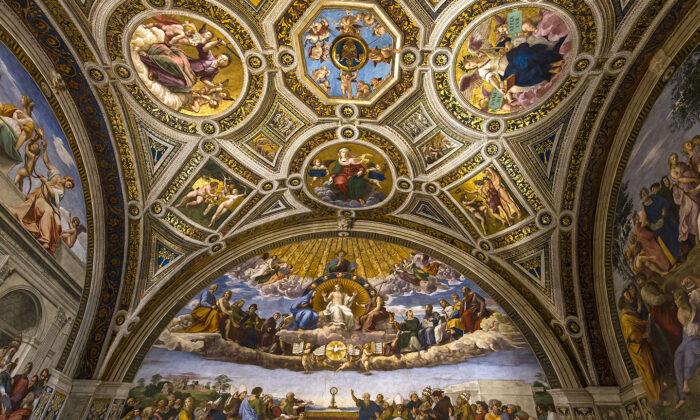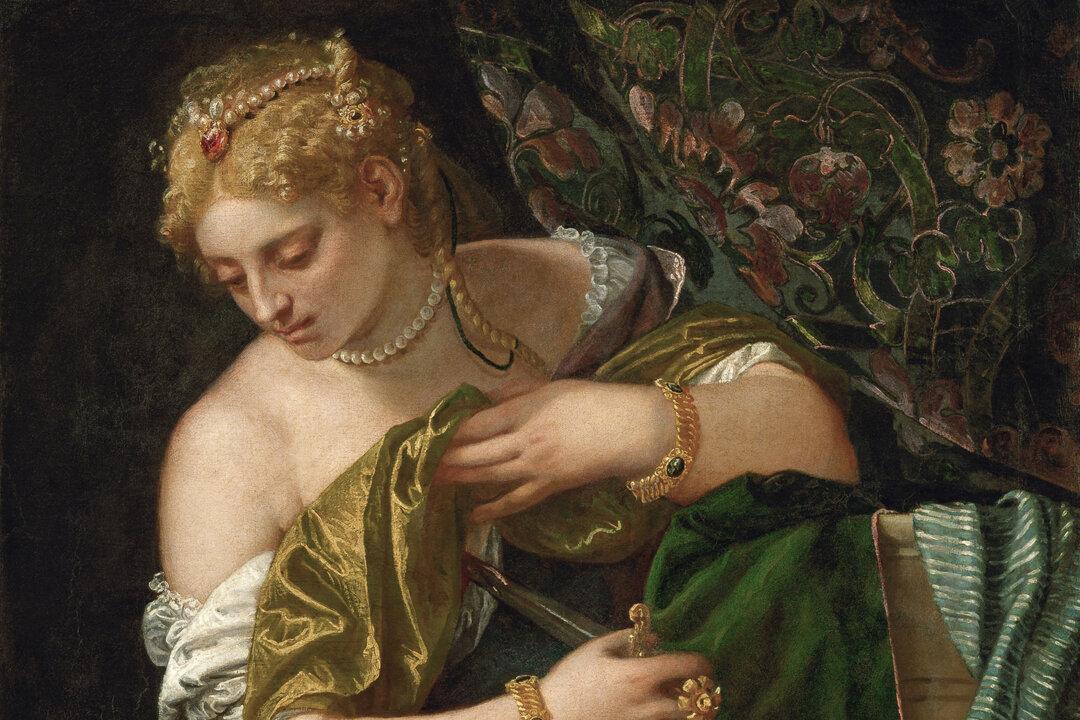Raphael’s feelings were undoubtedly mixed as he received his first commission from the powerful patron of the arts Pope Julius II. At 25 years of age, Raffaello Sanzio was known throughout Italy as a rapidly rising star artist. Now, he had been chosen to fresco four rooms in the Apostolic Palace, the pope’s official residence. It was a high honor and sure to solidify his professional status.
Yet more prestigious frescoes, paintings of pigment mixed with wet plaster, were being simultaneously painted a few hundred yards away in the Sistine Chapel. Paradoxically, Raphael was in the shadow of a more established artist and had less experience for the job. Though still a rising painter, Raphael was already an accomplished one. His rival was already at the top of the artistic world as a sculptor but had never painted a major work.
Room of the Segnatura
In Raphael’s day, the Stanza della Segnatura was Pope Julius’s library. That made it perfect for displaying artistic virtuosity while symbolizing Renaissance ideals: a synthesis of ancient ideals with Christian faith. The room could be devoted to “the true, the good, and the beautiful” manifested in art and learning, faith and reason, and upright living.
On the north wall, “The Parnassus” celebrated literature. Homer, Virgil, and Dante—the greatest epic poets of Greece, Rome, and Christian Europe—are placed together as a trio. Dozens of writers and fictional characters join them on all sides.
Across the room is “The Cardinal and Theological Virtues,” qualities the ancients shared with Christians. At the top of this work, the three cardinal virtues of prudence, fortitude, and temperance are depicted in human form together with the theological virtues as cherubs. The fourth cardinal virtue, justice, was painted on the ceiling above. At the bottom left and right, respectively, are Emperor Justinian and Pope Gregory IX with their codes of civil and canon law.
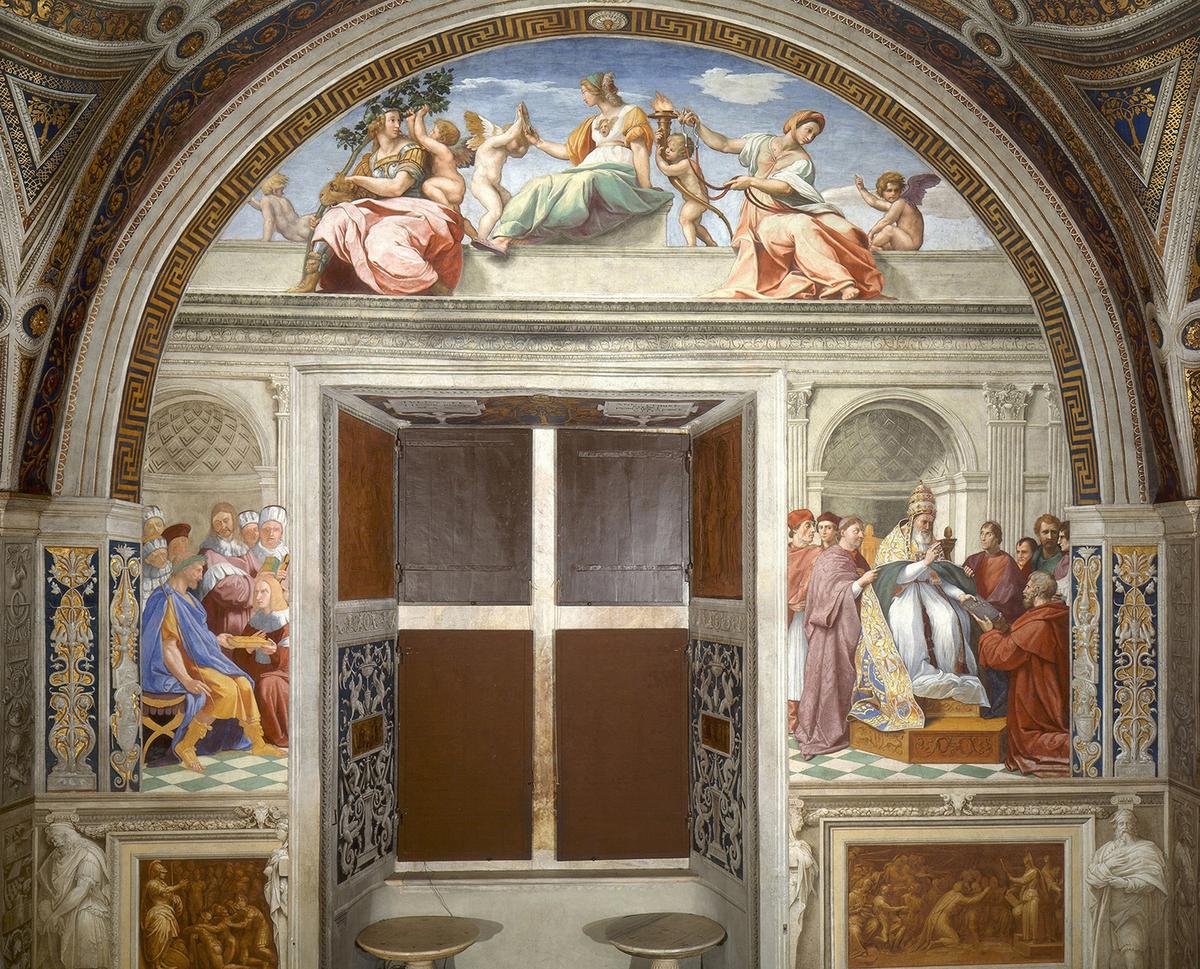
The west wall’s “Disputation of the Holy Sacrament” symbolizes Christian belief and theological scholarship with numerous biblical figures, saints, and popes surrounding an altar.
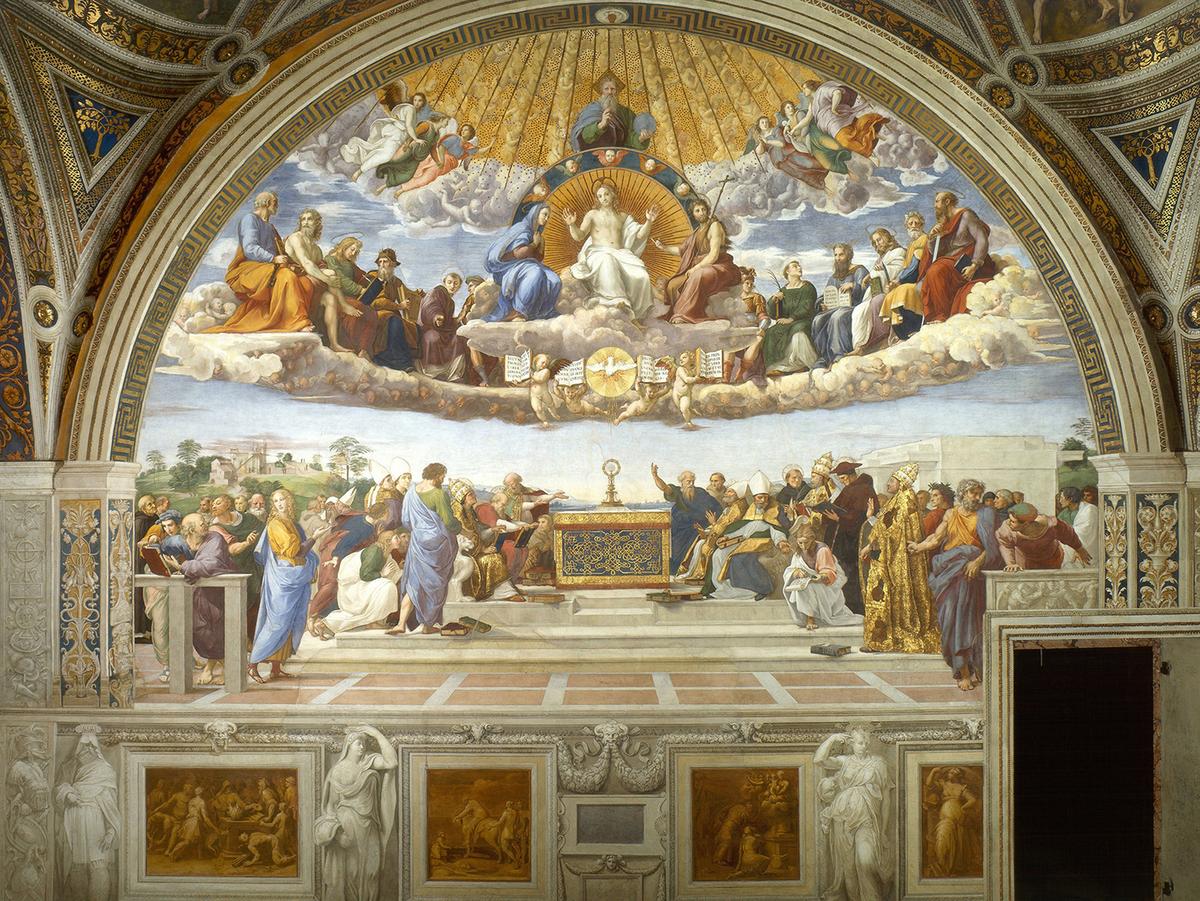
‘The School of Athens’
Each of these paintings would have solidified Raphael’s reputation. But the fresco on the fourth wall became one of the most definitive works of the High Renaissance: “The School of Athens” (1509–1511).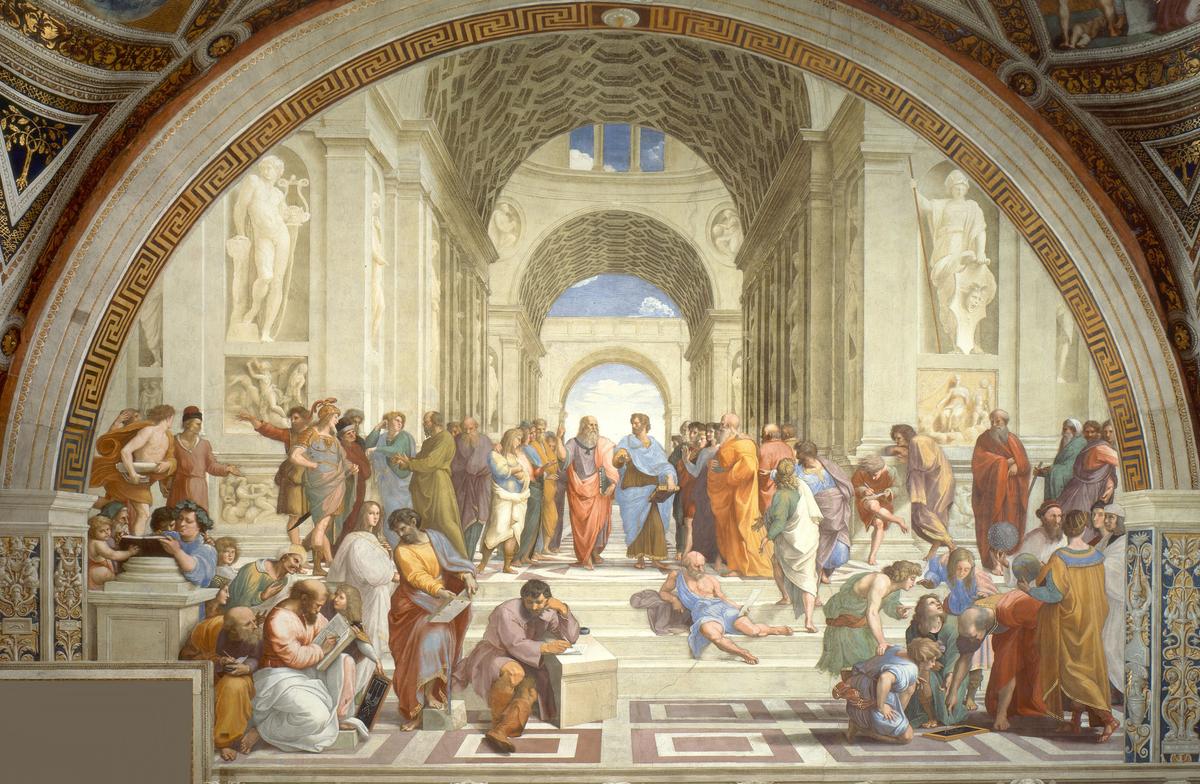
At the center of that work stand Plato and Aristotle, framed by arches and statues. Surrounding them is a plethora of ancient thinkers: Socrates, the mathematicians Euclid and Pythagoras, the Jewish philosopher Philo of Alexandria, and many others.
The scene mixes history and symbolism, as a tribute to great minds of the past. Many figures in the fresco capture the spirit of ancient intellectual life. Plato did start a school in Athens. For 300 years, it was a center of intellectual life for the entire Mediterranean world. Aristotle was his student and friend. Many other figures depicted in the painting either studied at Plato’s school, were associated with it later in history, or were contemporaries of its founder as well.
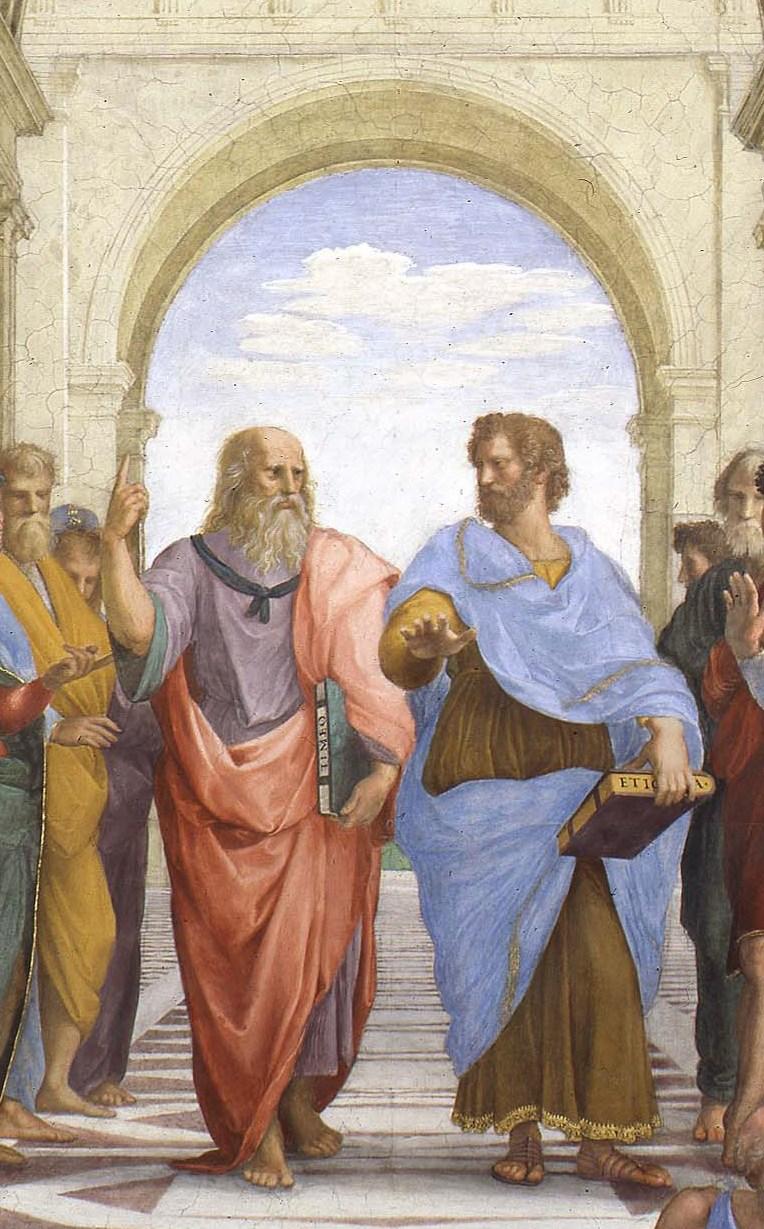
Another level of symbolism is found in Raphael’s models, who were eminent figures of his own day. Using them implied that they were grounded in classical tradition and worthy successors of the ancients.
Use of artistic patrons was standard practice and was not pure flattery. Many patrons’ devotion to Renaissance humanism was deep and genuine. Their financial support made the work of the geniuses possible. But their presence in “The School of Athens” is notably subtle. The only one we know who was included was Duke Federico II of Mantua, and he modeled for a minor character in the painting whose identity is unknown. Pope Julius II ordinarily would have been included as patron of the work. But since he served as a model for Pope Gregory IX in “The Disputation of the Blessed Sacrament,” it was possible to leave him out.
To make a deliberate statement, Raphael used other artists as models for the work’s philosophers and intellectuals. In the Middle Ages, artists had been viewed as workmen analogous to builders, stonemasons, and carpenters. Renaissance artists insisted their work was analogous to such higher pursuits as poetry and philosophy.
No less a figure than Leonardo da Vinci was the model for Plato. Other artist-models included Raphael’s teacher Bramante and his good friend Timoteo Viti. In a particularly touching tribute to Raphael’s rival, whom he admired greatly, Michelangelo was included front and center as Heraclitus.
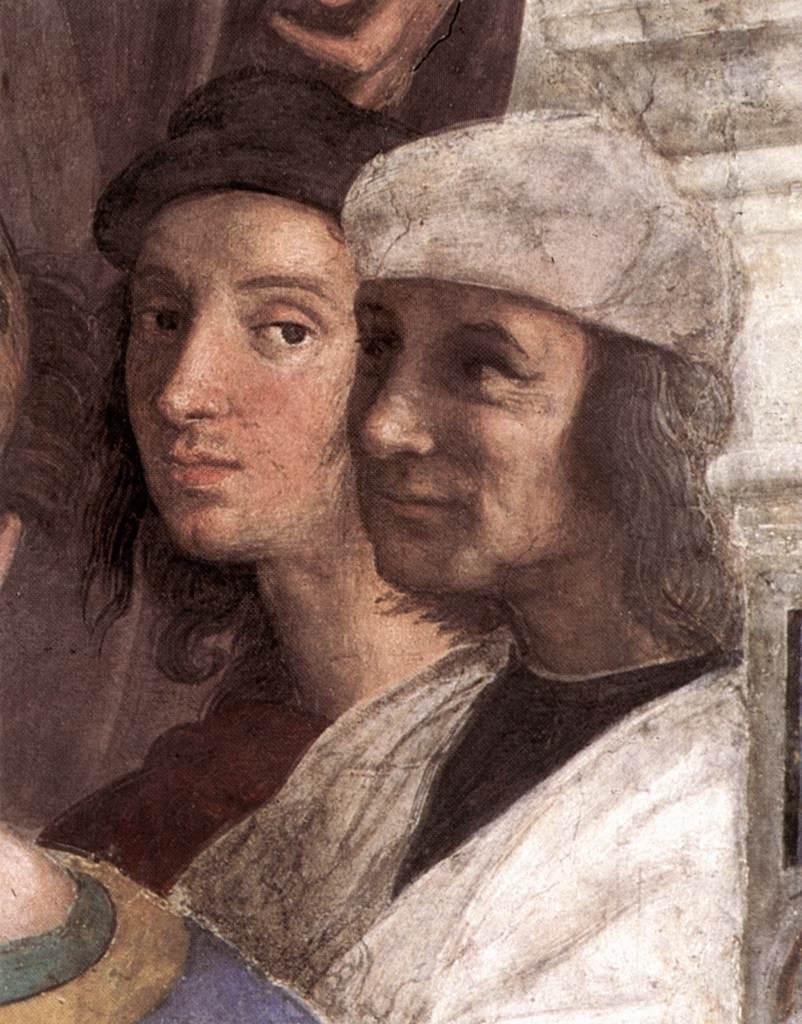
He reserved the figure of the ancient world’s greatest artist, Apelles, as his self-portrait. This may have signified only a desire to follow in the footsteps of his illustrious predecessor. Bold self-assertion would not, however, have been meant as being derogatory to the other artist-models. Leonardo da Vinci, Michelangelo, and Raphael had the same respect for Apelles as we have for those Three Greats of the Renaissance. If Raphael intended to imply that he was a new Apelles, he would also have been implying that only a new Apelles could rise above his greatest contemporaries.
Renaissance artists saw no conflict between intense competition and profound mutual respect. Striving to outdo men whose genius they admired spurred them on—bringing art to greater and greater heights.
The paintings of the Stanza della Segnatura were not just one of the greatest products of that rivalry but also the supreme artistic celebration of it. Leonardo da Vinci and Michelangelo would have recognized in them the spirit they shared with their creator. It was the spirit of men who were fully conscious of their dependence on lessons learned from the giants of the past and of their own age, yet who also had full confidence in their own ability to stand beside them.

